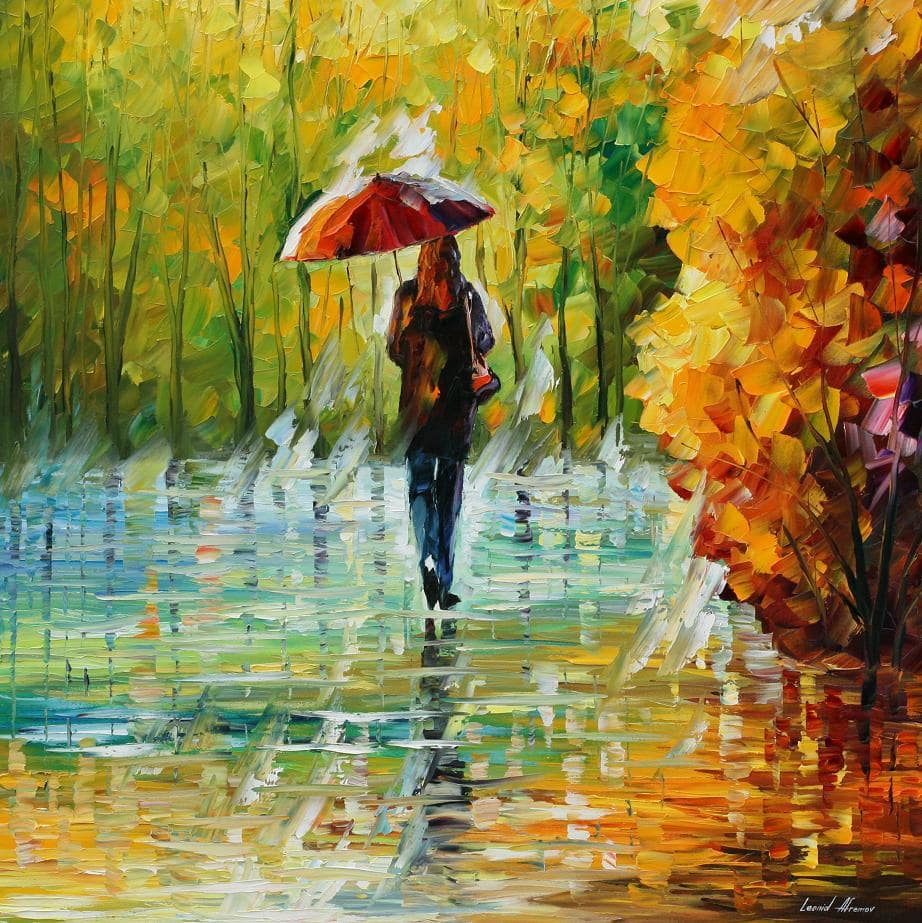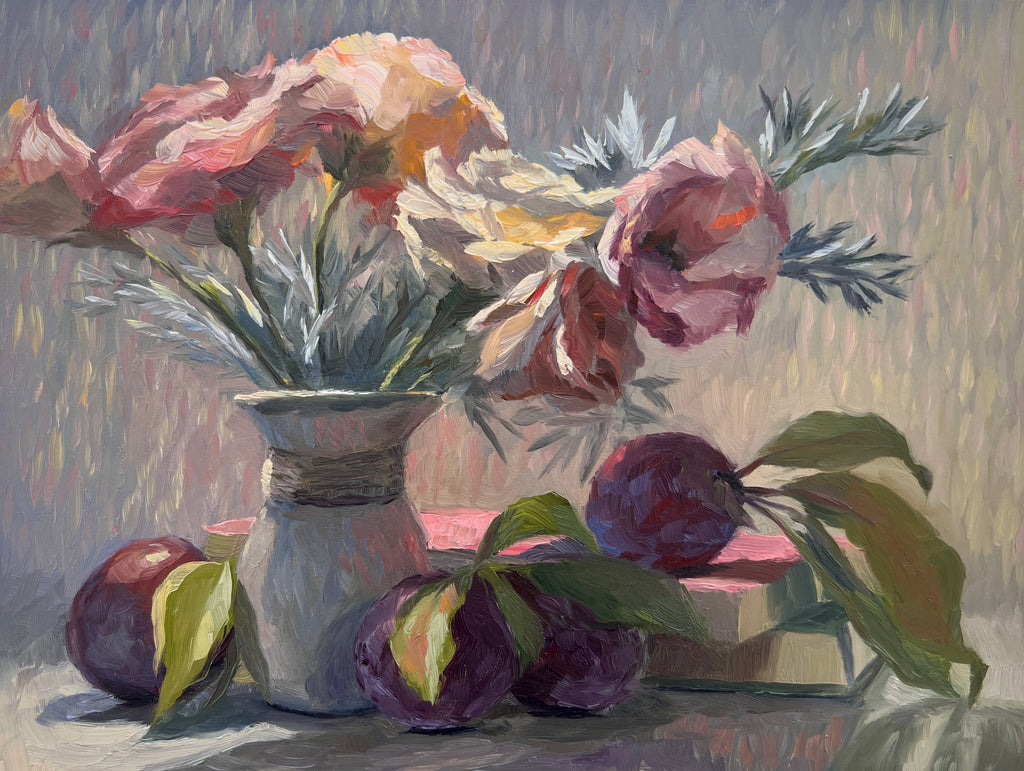Stylish Design Inspirations with Oil Paintings for Sale
Discovering Everything About Oil Paints: An Overview to Comprehending Their Beauty and Value
Oil paintings have actually astounded target markets for centuries, providing a peek into the artistic proficiency of numerous eras. Their rich background is linked with ingenious techniques and extensive emotional expression. Understanding the products and techniques behind these artworks can enhance appreciation. In addition, the market for oil paintings offers possibilities for investors and enthusiasts alike. As one explores this fascinating globe, the question arises: what makes an oil paint absolutely beneficial?
The Background of Oil Paint: A Journey Via Time
Although oil paint has roots that go back to old times, it absolutely flourished throughout the Renaissance, when artists uncovered its convenience and rich shade potential. Early examples can be mapped to the 7th century, with methods evolving significantly throughout cultures. The tool came to be famous in Northern Europe in the 15th century, specifically through the works of musicians like Jan van Eyck, who originated its usage for comprehensive realistic look and vibrant colors. This period noted a departure from tempera paints, permitting for greater depth and structure. As oil paint spread, it influenced many musicians, leading to work of arts by popular figures such as Leonardo da Vinci and Rembrandt. The tool's heritage proceeds, forming the art world well right into contemporary times.
Understanding Oil Paints: Products and Techniques
As musicians discover the world of oil paints, they experience a diverse array of materials and methods that specify this tool. The key components of oil paint include pigments, which offer color, and drying out oils, such as linseed, that bind the pigments and assist in application. Numerous ingredients can change the paint's texture and drying time, enhancing convenience. Strategies like glazing, where clear layers are constructed up, and impasto, which involves applying thick paint, permit different visual effects. Additionally, making use of brushes, combination knives, and even fingers can develop one-of-a-kind textures and coatings. Comprehending these strategies and materials allows musicians to fully share their creative thinking and achieve the desired impact in their art work.
The Duty of Color in Oil Paints
Color plays a crucial duty in oil paints, influencing both visual appeal and emotional resonance. Understanding color theory essentials, consisting of the partnerships between shades, can boost an artist's ability to convey state of mind and atmosphere. In addition, understanding color blending strategies permits greater depth and splendor in a painting's palette.

Color Theory Fundamentals
Comprehending shade concept is vital for artists collaborating with oil paints, as it forms the structure for creating visually appealing and harmonious structures. Shade theory includes the study of exactly how colors engage, the shade wheel, and the relationships in between key, second, and tertiary colors. Musicians utilize complementary colors to improve contrasts and develop centerpieces, while analogous colors advertise unity and cohesiveness within an item. Furthermore, the principles of warm and awesome colors influence the perception of deepness and space in a paint. Comprehending these principles allows musicians to adjust color efficiently, assisting the visitor's eye and interacting their desired message. Mastery of shade concept ultimately improves an artist's ability to communicate emotions and ideas through their job.
Emotional Effect of Shade
The emotional influence of shade in oil paints plays a critical duty in exactly how audiences regard and link with artwork. Colors evoke particular sensations and moods, influencing the visitor's emotion. Cozy shades like reds and oranges can develop a feeling of warmth and energy, while great tones such as blues and environment-friendlies often stimulate calmness or introspection. Artists purposefully pick color schemes to boost narrative components, guiding the target market's psychological trip. The saturation and contrast of colors even more enhance these results, drawing focus and producing focus. Eventually, the interplay of shades in oil paintings not just improves their aesthetic charm but also functions as an effective medium for emotional expression, enriching the visitor's experience and interpretation.
Color Combining Techniques
While lots of elements of oil painting add to the overall make-up, mastering shade blending techniques is crucial for accomplishing desired impacts and deepness. Color blending can be come close to through different approaches, including the additive and subtractive processes. Additive blending entails integrating colors of light, while subtractive blending depends on pigments, where shades mix to create new shades. Musicians usually utilize a restricted combination to develop unified works, comprehending the partnerships between main, second, and tertiary colors. Strategies such as glazing and scumbling even more improve depth and luminosity. By skillfully blending shades, an artist can stimulate emotions, develop focal factors, and accomplish a feeling of realistic look, inevitably boosting the painting's visual and psychological influence.
Famous Oil Painters and Their Iconic Functions

Renowned for their mastery of shade and technique, oil painters have developed several of the most well known art work in history. Renowned musicians like Vincent van Gogh astounded audiences with his stirring brushwork in "Starry Night," while Claude Monet's "Impact, Dawn" laid the foundation for Impressionism. Leonardo da Vinci's "Mona Lisa" stays an enduring sign of creative wizard, showcasing his ability in catching human expression. Rembrandt's "The Night Watch" illustrates his innovative use of light and darkness. Various other notable numbers consist of Pablo Picasso, who revolutionized modern art with his vibrant experimentation in works like "Les Demoiselles d'Avignon," and Georgia O'Keeffe, whose lively representations of landscapes and flowers helped define American modernism. Each artist's one-of-a-kind style contributed considerably to the oil paint landscape.
Just how to Assess the Top Quality of an Oil Paint
Evaluating the top quality of an oil painting includes a cautious analysis of workmanship methods, along with an analysis of color and make-up. Observing brushwork, layering, and the application of paint can disclose the artist's skill degree. In addition, the interaction of colors and the overall plan of elements add significantly to the paint's visual value.
Examining Craftsmanship Strategies
A thorough analysis of workmanship methods is important for figuring out the high quality of an oil painting. Evaluators need to first take a look at the application of paint; thick, distinctive brushstrokes might recommend a proficient hand, while excessively consistent applications can suggest an absence of depth. oil paintings for sale. The layering technique is additionally crucial; the existence of glazes and differed thickness can boost brightness and complexity. In addition, the high quality of the materials utilized, such as the canvas and pigments, plays a substantial function in toughness and overall visual. Interest to information in aspects like sides and shifts in between colors mirrors click here the artist's dedication to their craft. Inevitably, these methods add to the painting's psychological effect and market price, acting as indications of the artist's ability and intent
Analyzing Shade and Composition
While examining the top quality of an oil paint, one need to concentrate on the interplay of shade and composition, as these aspects are basic to the artwork's general influence. Color options can stimulate emotions and establish mood; consequently, the artist's combination need to be examined for consistency and comparison. A well-balanced composition guides the customer's eye and develops a feeling of unity. Artists typically use techniques like the guideline of thirds or leading lines to boost aesthetic interest. Additionally, making use of light and shadow can add deepness, improving the three-dimensionality of the painting. Ultimately, a successful oil painting marries shade and composition, involving the customer and welcoming a deeper gratitude of the artist's vision and technique.
Taking care of and Preserving Oil Paintings
Correct treatment and preservation of oil paintings is essential for maintaining their honesty and durability. To secure these artworks, it is important to display them far from direct sunlight, which can create fading and staining. Preserving a stable setting with controlled temperature and moisture more aids in avoiding damage. Cleansing must be done gently making use of a soft, completely dry cloth, staying clear of any type of severe chemicals that might hurt the paint or varnish. Regular inspections for indications of wear and tear, such as flaking or fracturing, are a good idea. When carrying or saving oil paints, proper extra padding and framing are essential to prevent physical injury. Eventually, attentive care adds to the visual charm and worth of oil paintings gradually.
The Market for Oil Paintings: Accumulating and Investing
Comprehending the marketplace dynamics for oil paintings is crucial for collection agencies and capitalists alike. The worth of these artworks is influenced by various elements, including the artist's online reputation, historical significance, and present patterns. Enthusiasts typically seek items that resonate directly while thinking about potential recognition in value. Galleries and public auctions work as key locations for trading, with costs fluctuating based on need and rarity. Investing in oil paints calls for research study right into the market, in addition to an understanding of credibility and provenance. Additionally, arising musicians might offer chances for substantial returns, while established names can regulate high rates. In general, a critical approach to gathering can generate both aesthetic enjoyment and economic incentives.

Often Asked Questions
What Are the Ecological Impacts of Oil Paint Materials?
The ecological effects of oil painting products include the launch of volatile organic compounds (VOCs), dangerous waste generation, and resource removal for pigments. These elements add to contamination and eco-friendly deterioration, elevating issues amongst ecologically aware artists and customers.
How Do Different Canvases Affect Oil Painting Outcomes?
Different canvases influence oil painting results substantially. Absorbency, surface area, and structure quality can alter paint application, drying out times, and shade vibrancy. Musicians usually pick details canvases to attain desired results and boost their imaginative expression.
Can Oil Paintings Be Recovered if Harmed?
If harmed, Oil paints can undoubtedly be restored. Professional conservators make use of numerous strategies to repair rips, tidy surfaces, and address staining, making sure that the artwork keeps its initial appeal and worth for future generations.
What Are the Signs of an Original Oil Painting?
The signs of an original oil painting include visible brush strokes, structure variations, and an irregular canvas weave (oil paintings for sale). In addition, authenticity might be verified through provenance, trademarks, and the existence of a varnish layer unique to oil tools
Exactly How Has Technology Influenced Modern Oil Paint Techniques?
Technology has actually significantly affected contemporary oil paint techniques by presenting digital devices for planning, improved materials for structure and durability, and on-line platforms for offering and sharing art, therefore broadening musicians' creative opportunities and audience reach. Oil paint has roots that date back to ancient times, it absolutely thrived throughout the Renaissance, when musicians found its versatility and rich shade potential. The emotional effect of shade in oil paintings plays a crucial function in just how viewers connect and view with art work. While many elements of oil paint add to the overall structure, understanding shade mixing techniques is crucial for achieving desired impacts and deepness. Reviewing the quality of an oil paint entails a cautious analysis of craftsmanship techniques, as well as an analysis of color and make-up. While assessing the high quality of an oil paint, one have to concentrate on the interplay of color and structure, as these components are basic to the art work's total influence.